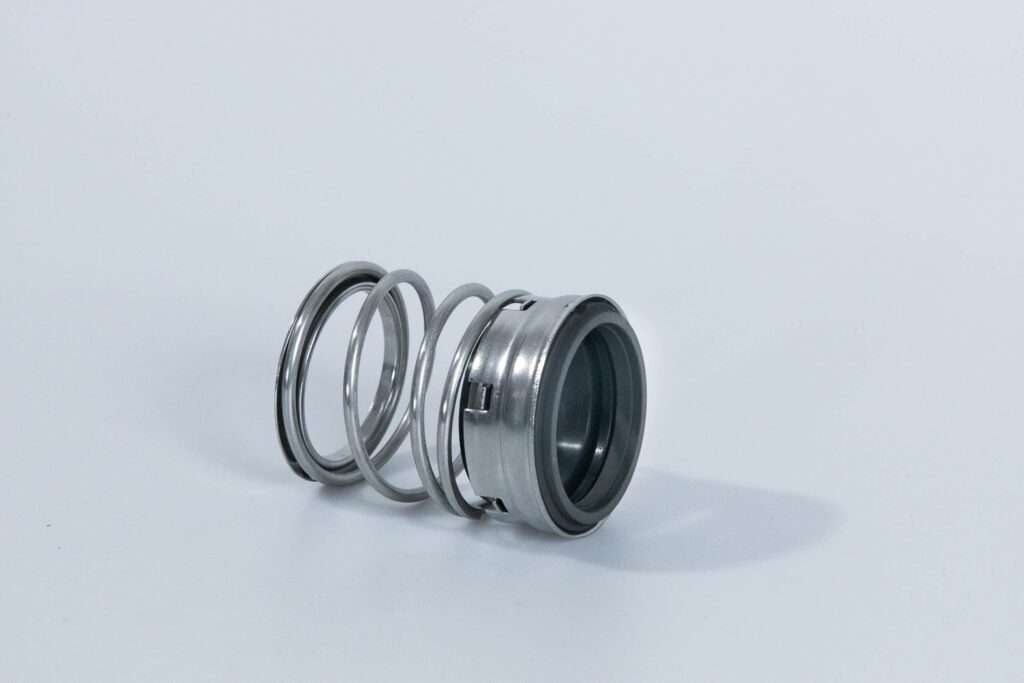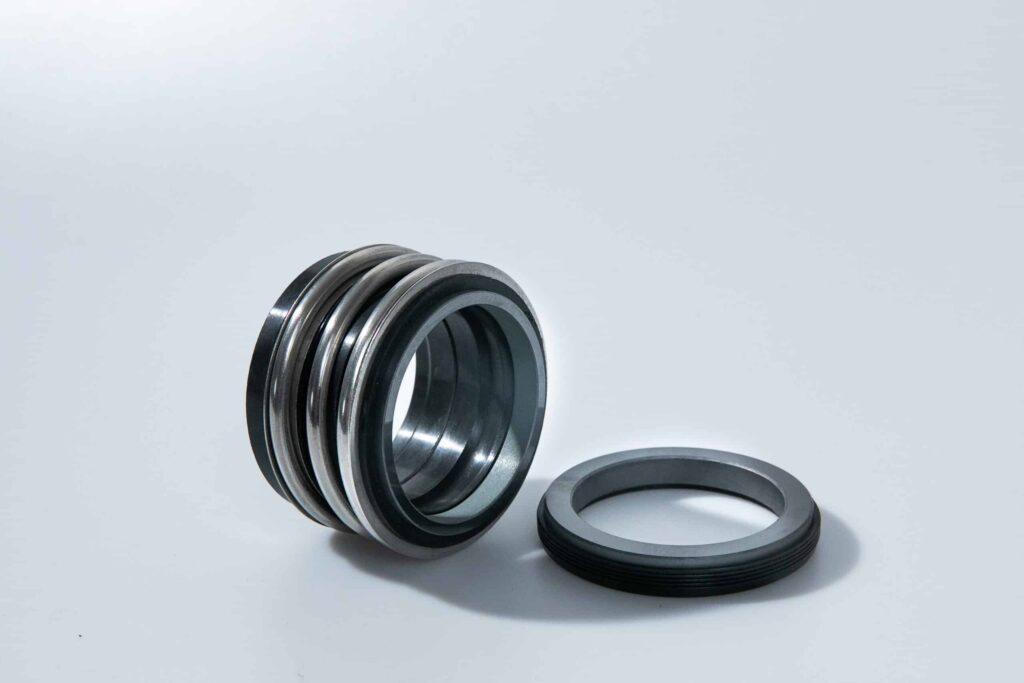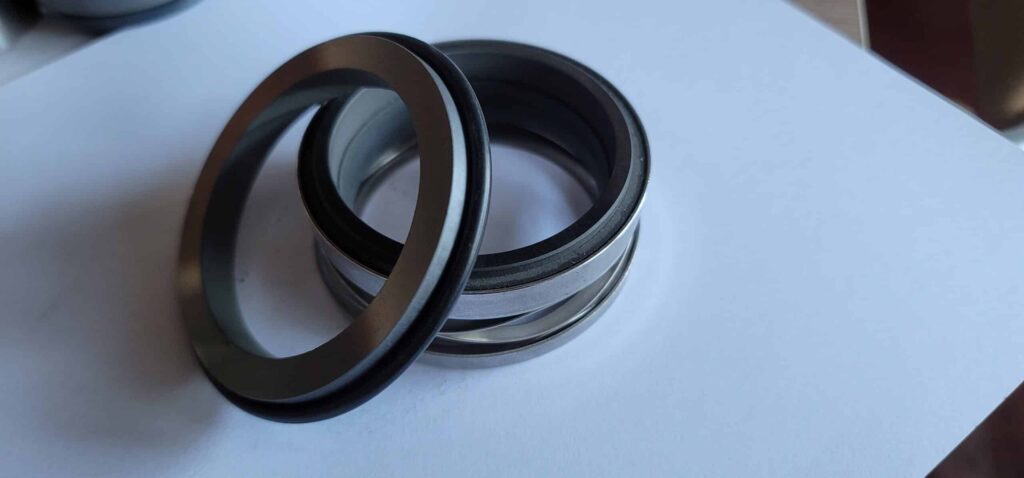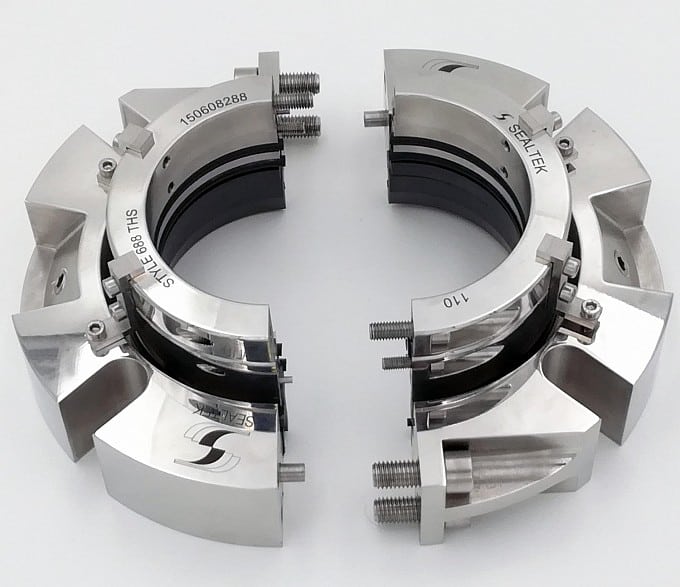Energy efficiency in seal selection is crucial for optimizing industrial processes and reducing operational costs. Key considerations include the type of seal (mechanical seals or compression packing), operating conditions, seal support systems, and maintenance practices.
By carefully evaluating these factors and implementing strategies such as proper seal selection, optimized support systems, and predictive maintenance, companies can significantly improve their sealing solutions’ energy efficiency.

Types of Seals and Their Impact on Energy Efficiency
Mechanical Seals
Mechanical seals consist of two precisely engineered faces that rotate against each other, creating a barrier to prevent fluid leakage. These seals typically offer superior energy efficiency due to their low friction design. The reduced friction translates to less power consumption, as less energy is lost to heat generation at the seal interface. Advanced mechanical seals may incorporate features like balanced designs or specialized face materials to further minimize friction and enhance energy efficiency.
Compression packing
Compression packing relies on compressible materials wrapped around a shaft to create a seal. While generally less expensive than mechanical seals, compression packing often results in higher energy consumption. The increased friction between the packing and the rotating shaft leads to greater power loss and heat generation. This energy inefficiency is particularly pronounced in high-speed applications or when the packing is over-tightened to prevent leakage.
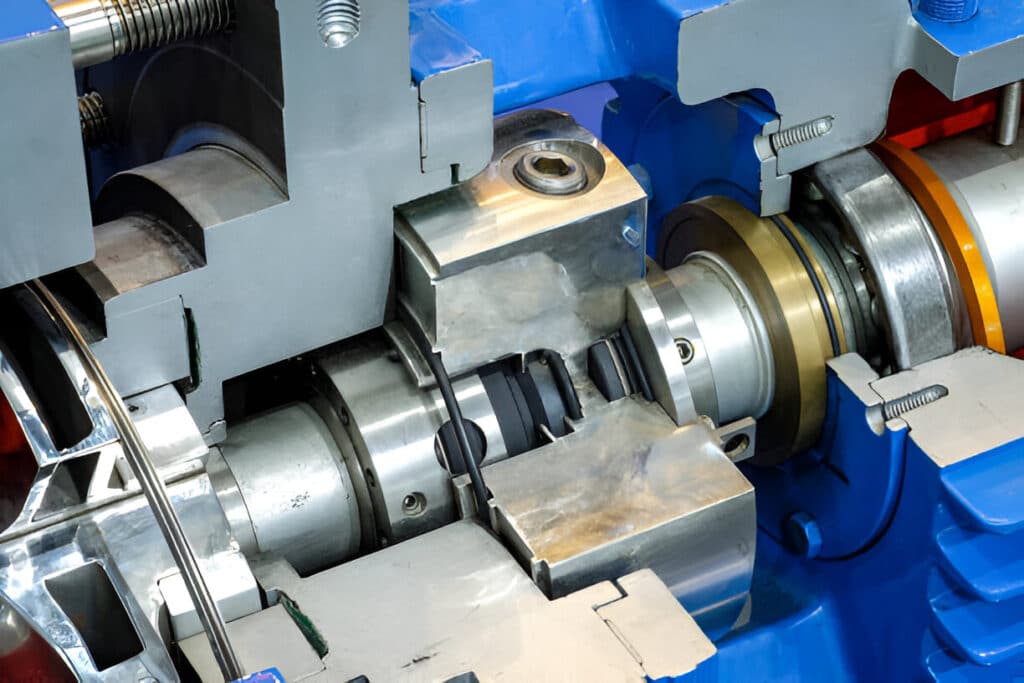
Factors Affecting Seal Energy Efficiency
Operating Conditions
Temperature, pressure, speed, and media significantly impact seal energy efficiency.
High temperatures increase friction and wear, reducing seal lifespan and energy efficiency. Optimal temperature ranges vary by seal material, with fluoroelastomers typically handling up to 200°C and perfluoroelastomers reaching 300°C.
Pressure affects seal deformation and contact force. Higher pressures demand more robust seals, potentially increasing friction. For instance, mechanical seals operate efficiently up to 70 MPa, while compression packing suits lower pressures below 35 MPa.
Shaft speed influences heat generation and lubrication. Higher speeds require advanced materials and designs to maintain efficiency. Modern mechanical seals can handle speeds up to 50 m/s, whereas compression packing is limited to 10 m/s.
Media properties, such as viscosity and abrasiveness, impact seal performance. Viscous fluids increase power consumption, while abrasive media accelerate wear. For example, PTFE seals resist most chemicals but may not suit high-temperature applications.
Seal Support Systems
API flush plans developed by the American Petroleum Institute (API), are designed to optimize seal performance and reduce energy consumption.
Key API flush plans that impact energy efficiency include:
- Plan 11: Utilizes process fluid recirculation to cool and lubricate the seal faces. This plan is energy-efficient for clean, cool fluids but may require additional energy for hot or dirty applications.
- Plan 23: Employs a cooling jacket around the seal chamber. It’s effective for high-temperature applications but requires external cooling systems, potentially increasing energy usage.
- Plan 32: Injects clean fluid from an external source to improve lubrication and cooling. While it enhances seal life, it may increase overall system energy consumption.
- Plan 53A/B/C: These dual seal arrangements use barrier fluid systems. They offer excellent contamination control but require additional pumping energy for fluid circulation.
- Plan 54: Uses an external pressurized gas sealing system. It’s highly efficient for specific applications but requires compressed gas, impacting overall energy usage.
Seal Installation and Maintenance
Incorrect installation can lead to premature seal failure, increased friction, and energy losses. To maximize efficiency, follow manufacturer guidelines and industry best practices during installation.
Implement a proactive maintenance schedule, including periodic inspections, lubrication checks, and replacement of worn components. This approach helps prevent unexpected failures and maintains optimal seal performance.
Monitor seal flush systems regularly to ensure they operate at designed flow rates and pressures. Improper flush rates can lead to inadequate cooling, increased friction, and higher energy consumption. Adjust flush plans as needed to maintain optimal efficiency.
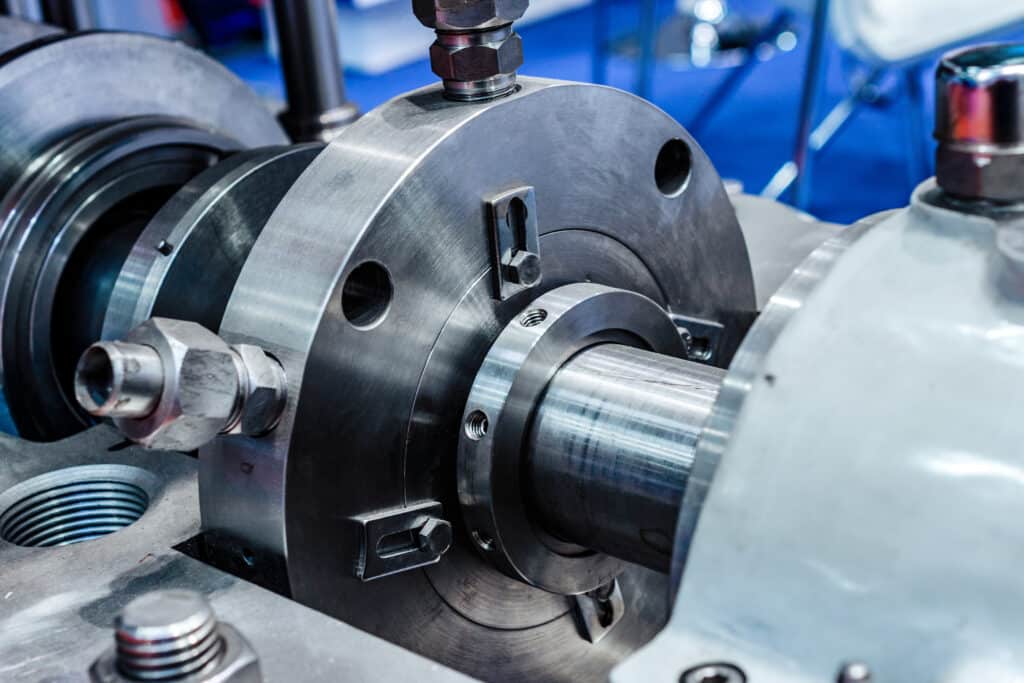
Strategies for Improving Seal Energy Efficiency
Seal Selection Process
Analyzing the specific operating conditions, including temperature, pressure, speed, and media. These factors directly impact seal performance and energy consumption.
Consider the seal type best suited for the application. Mechanical seals often offer superior energy efficiency compared to compression packing for rotating equipment. For static applications, gaskets or O-rings may be more appropriate.
Evaluate the seal face materials carefully. Advanced materials like silicon carbide or tungsten carbide can reduce friction and wear, leading to improved energy efficiency and longer seal life. Balance material hardness with tribological properties to minimize heat generation and energy loss.
Assess the seal design, focusing on features that enhance energy efficiency. Split seals, for instance, can simplify installation and maintenance, reducing downtime and associated energy costs. Balanced seal designs help minimize seal face loading, reducing friction and energy consumption.
Optimizing Seal Support Systems
API flush plans, integral to these systems, can be optimized to reduce power consumption and improve overall performance.
- Implementing a thermosiphon system (API Plan 23) can eliminate the need for pumps, reducing energy usage.
- For high-temperature applications, employing a water-cooled heat exchanger (API Plan 21) can efficiently manage seal chamber temperatures, minimizing thermal stress and energy loss.
- Utilizing pressure control valves in API Plan 53A or 53B configurations can maintain optimal barrier fluid pressure, reducing unnecessary energy expenditure.
- For dual seals, implementing a low-pressure barrier fluid system (API Plan 52) can significantly decrease power consumption compared to high-pressure alternatives.
- Implementing orifice-controlled flush plans (API Plan 11 or 31) can reduce the required flow rate, minimizing pump energy consumption.
- For applications with dirty process fluids, employing cyclone separators (API Plan 41) can improve fluid cleanliness without additional energy input.
- Advanced monitoring and control systems, such as those used in API Plan 54, can dynamically adjust barrier fluid circulation rates based on real-time operating conditions.
Predictive Maintenance and Monitoring
Advanced sensor technologies and data analytics enable real-time tracking of seal performance, allowing for proactive maintenance and energy optimization.
- Vibration analysis detects early signs of seal wear or misalignment, preventing energy losses due to increased friction.
- Thermal imaging identifies hot spots in sealing systems, indicating potential energy inefficiencies or impending failures.
- Acoustic emission monitoring detects leaks in seals before they become significant, preserving system efficiency and preventing product loss.
- Pressure and flow monitoring ensure optimal seal flush rates, minimizing unnecessary energy consumption in support systems.
Advanced Seal Materials
Fluoropolymers, such as polytetrafluoroethylene (PTFE), offer excellent chemical resistance and low friction properties. These materials are ideal for seals in aggressive environments, reducing energy loss due to friction and extending seal lifespan.
Perfluoroelastomers (FFKM) provide superior temperature and chemical resistance. They maintain their sealing properties in extreme conditions, ensuring consistent energy efficiency across a wide range of operating parameters.
Carbon-graphite composites exhibit exceptional thermal conductivity and self-lubricating properties. These materials are particularly effective in dry-running applications, reducing the need for external lubrication and minimizing energy consumption.
Diamond-like carbon (DLC) coatings applied to seal faces drastically reduce friction and wear. This technology is particularly beneficial in high-speed applications, where energy losses due to friction are most pronounced.
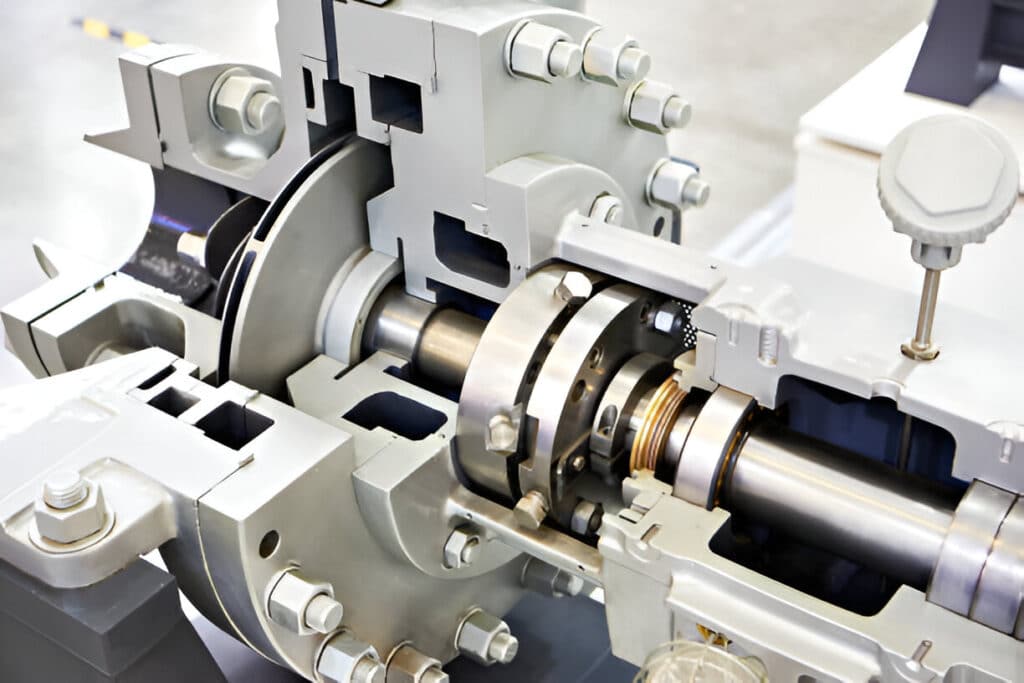
Benefits of Energy-Efficient Sealing Solutions
Reduced energy consumption and operating costs
By minimizing friction and heat generation, these seals decrease the power required to operate pumps, compressors, and other rotating equipment. This reduction in energy usage directly translates to lower electricity bills and decreased operational expenses.
Improved equipment reliability and reduced downtime
These seals experience less wear and degradation due to their optimized design and materials, leading to extended service life. Consequently, maintenance intervals are prolonged, and unexpected failures are minimized, resulting in increased uptime and productivity.
Minimized environmental impact through reduced emissions and leakage
By maintaining a more effective seal between moving parts, these solutions prevent the escape of harmful substances into the environment. This reduction in emissions and leakage not only complies with stringent environmental regulations but also promotes corporate sustainability goals.
Enhanced overall plant efficiency and sustainability
These seals contribute to the optimization of entire systems, improving the performance of connected equipment and processes. The cumulative effect of these improvements leads to a more sustainable operation, reducing resource consumption and waste generation across the entire facility.
